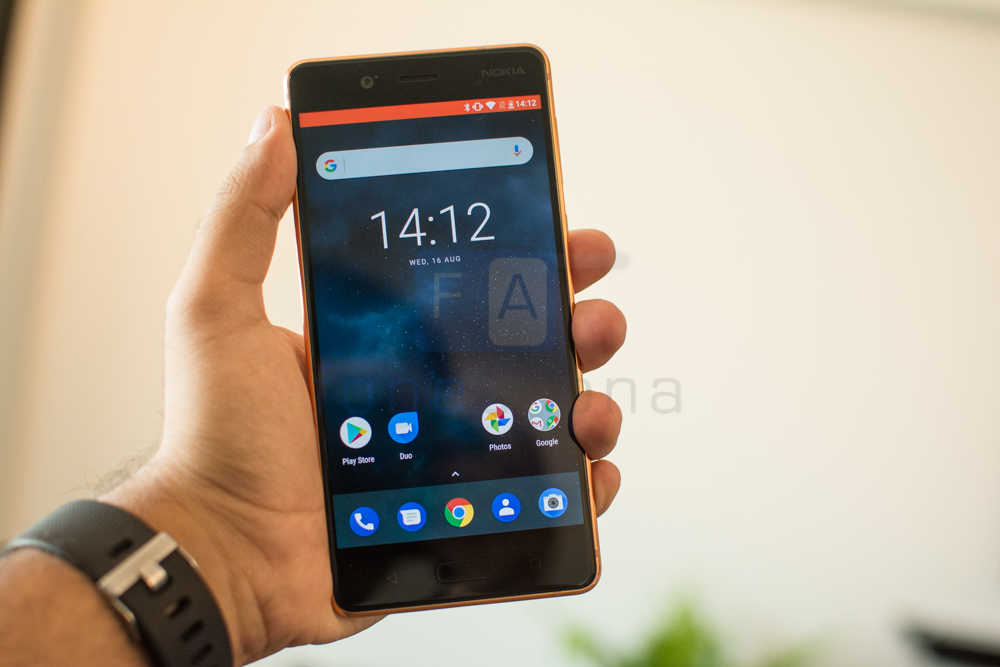
When HMD Global resurrected Nokia’s smartphones, a flagship was what everyone had in mind but instead we got the 3,5 and 6. Good devices to be sure but not quite trailblazers. There’s no doubt about the fact that enthusiasts and loyalists have been waiting for a new top end device from Nokia. With the launch of the 8, the company is aiming to deliver just that. So without further ado, here’s a closer look at the all new Nokia 8.
Nokia 8 specifications
- 5.3-inch (2560×1440 pixels) Quad HD LCD display at 554ppi pixel density, sculpted Corning Gorilla Glass 5 protection, 700 nits brightness
- Octa-Core Snapdragon 835 Mobile Platform with Adreno 540 GPU
- 4GB LPPDDR4X RAM, 64GB internal storage, expandable memory up to 256GB with microSD
- Android 7.1.1 (Nougat)
- Single / Hybrid Dual SIM (nano + nano/microSD)
- 13MP (Colour) primary camera with OIS + 13MP (Mono), ZEISS optics, 1.12um pixel size, f/2.0 aperture, 76.9-degree wide-angle lens, PDAF, IR range finder, dual tone flash
- 13MP auto focus front-facing camera with ZEISS optics, PDAF, 1.12um pixel size, f/2.0 aperture, 78.4˚ lens
- Fingerprint sensor, Barometer
- 3.5mm headphone jack, 3 microphones, Nokia OZO 360° spatial surround sound
- Dimensions: 151.5 x 73.7 x 7.9 mm
- 4G VoLTE, Wi-Fi 802.11ac (MIMO), Bluetooth 5.0, GPS/ GLONASS, USB Type-C 3.1 Gen 1, NFC
- 3090mAh battery with Qualcomm Quick Charge 3.0

A single glance at the device and you can see that it is unmistakably a Nokia smartphone. Designed in Finland; there’s symmetry, minimalism and a stylistic chic that is right in line with the rest of the line up yet different enough from the competition to standout.
Up front is a 5.3 inch Quad HD IPS LCD panel. Below it lies the fingerprint sensor and two capacitive keys flanking it. Unlike the Galaxy S8 or the LG G6, the screen is certainly not bezel less and further trimmed down edges would’ve been appreciated.
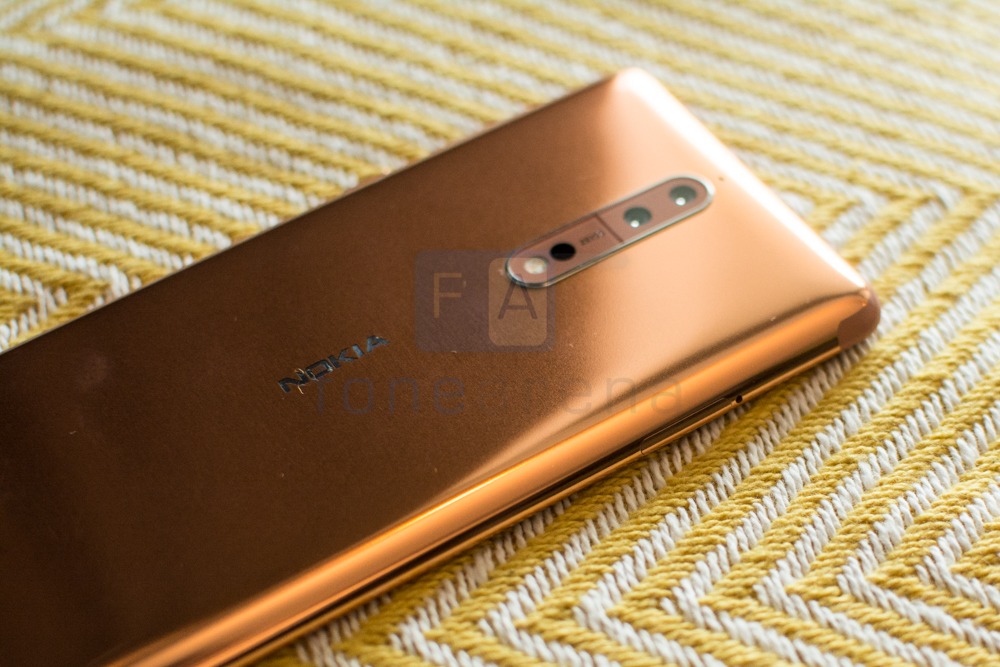
Over on the right is the volume rocker and power button both of which are sufficiently clicky and offer good feedback. The phone charges over USB Type C and has a 3.5mm audio jack at the top.
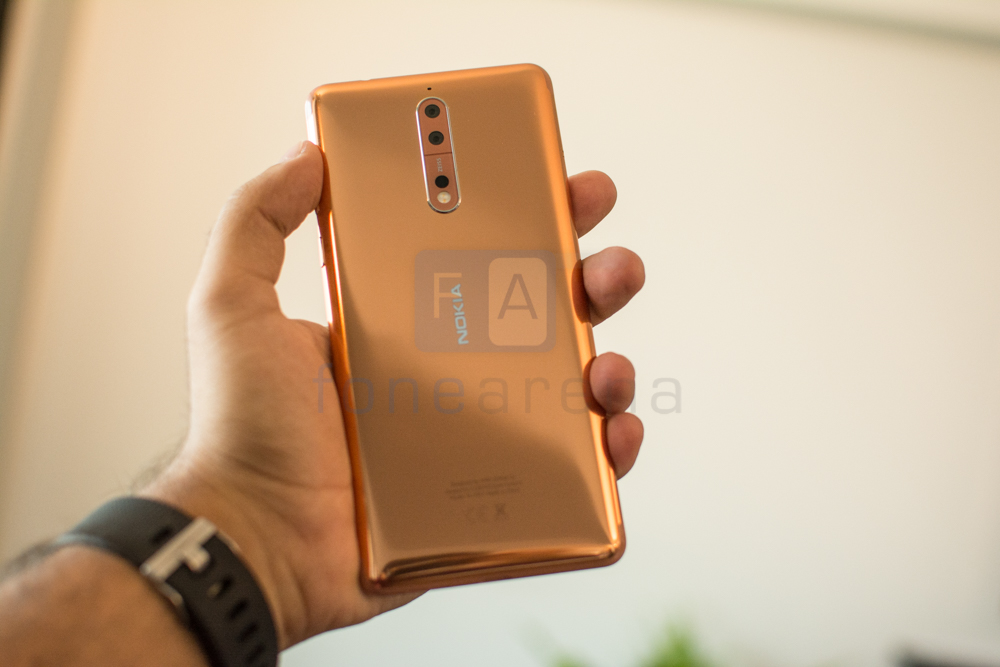
Flip the phone over and you’ll notice series 6000 aluminium back polished to a sheen in some of the variants. Beyond that though, there’s the long camera island which has two 13MP cameras, one of them being a monochrome sensor. Below the Zeiss branding lies the dual LED flash and laser autofocus module.
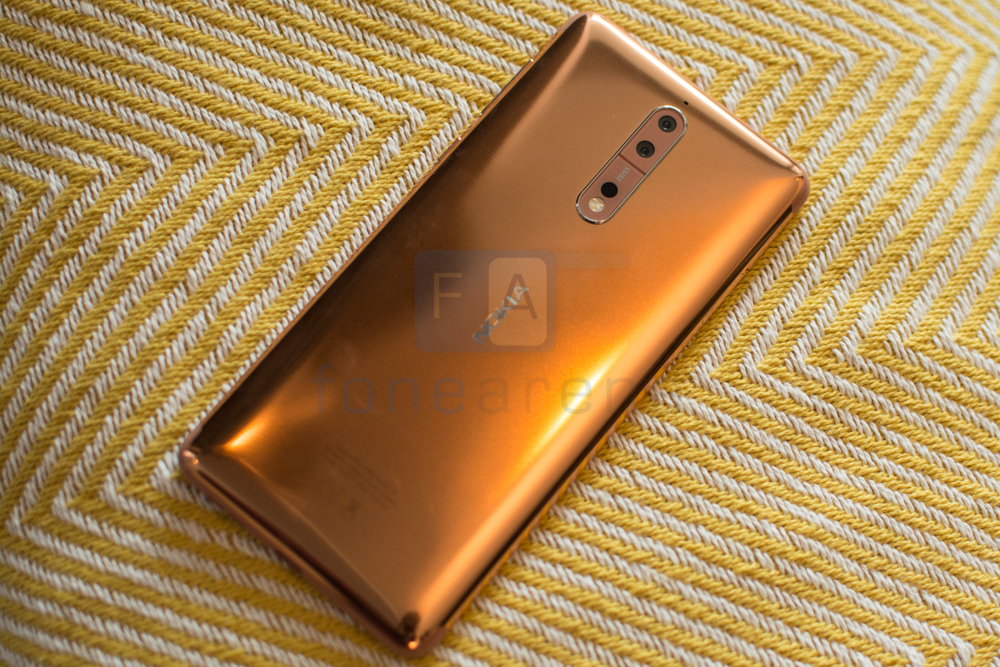
In terms of specifications, the phone is powered by a Snapdragon 835 chipset paired with 4GB of RAM. There’s 64GB of storage on board that can be expanded via the microSD card slot. The phone will have a Dual SIM version in some markets in which case the microSD slot will double up as a 2nd SIM slot. The battery capacity is 3090 mAh and the phone supports Quick Charge 3.0.
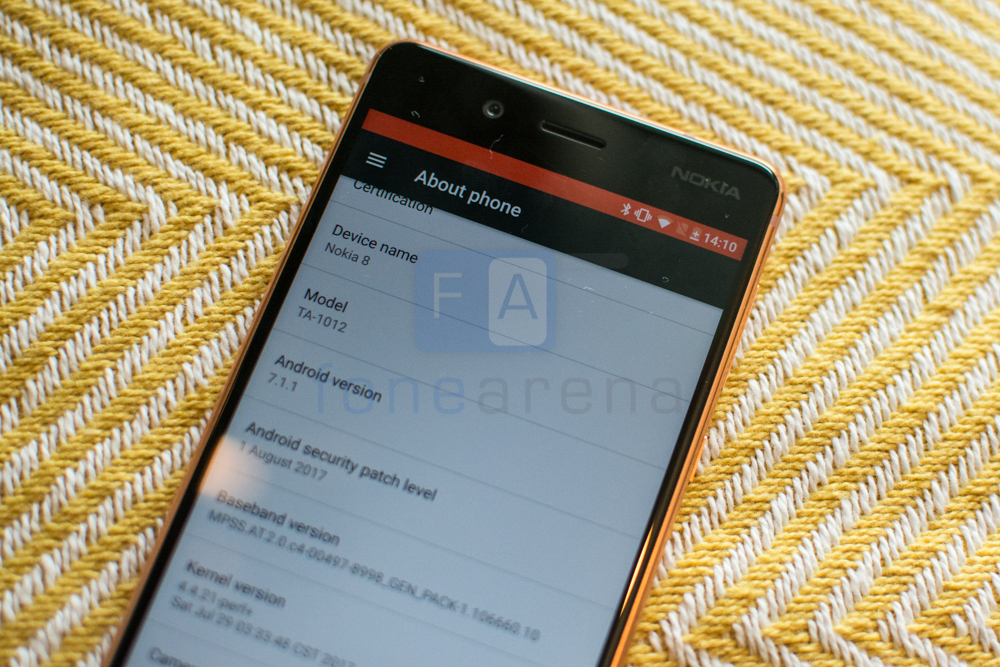
The phone runs a clean build of Android 7.1.1 with no extraneous additions and the August security patch installed. The company claims that the 8 will be amongst the first few devices to get the Android O update. Predictably, the phone flies and performance is fantastic, the clean software build certainly aids the flagship hardware in this respect. The company claims that significant work has gone into ensuring proper heat dissipation though we did observe one of the pre production devices heating up a bit with extended camera use.
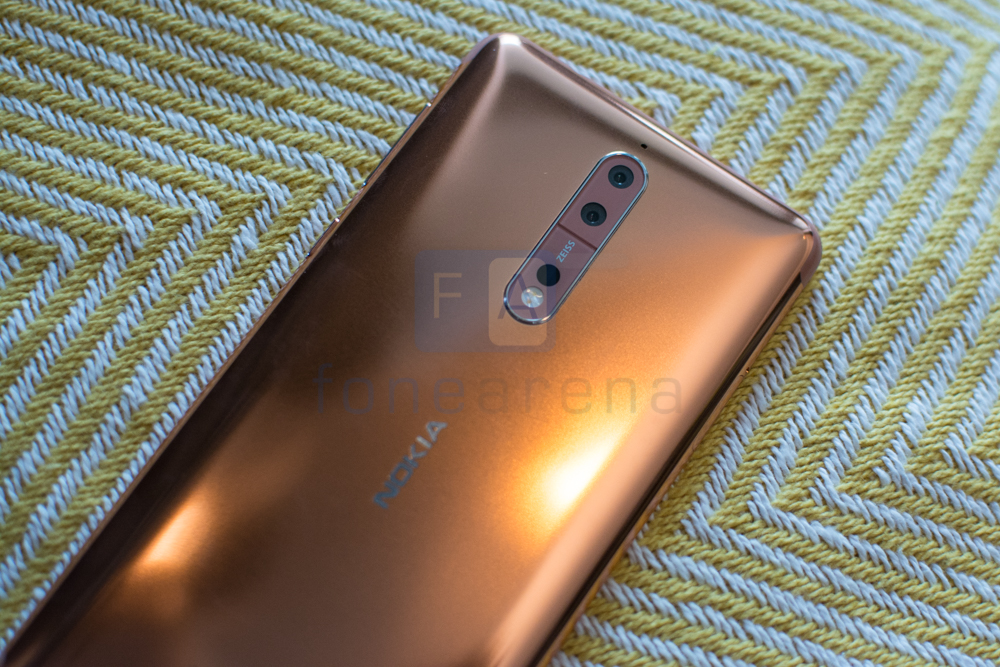
Talking about the camera, this is one of the key USPs of the device. The company claims that the 8 has been designed ground up for media creators and to this effect, it has added in some interesting tweaks to the camera app. Additionally, the phone includes Nokia’s OZO algorithms for binaural audio encoding.

The front and rear cameras have identical camera sensors with differing implementations. The main rear camera includes OIS while the secondary camera has a monochrome sensor. You can switch between either but the preferred choice is to let the camera automatically merge data from multiple shots to create the final image.
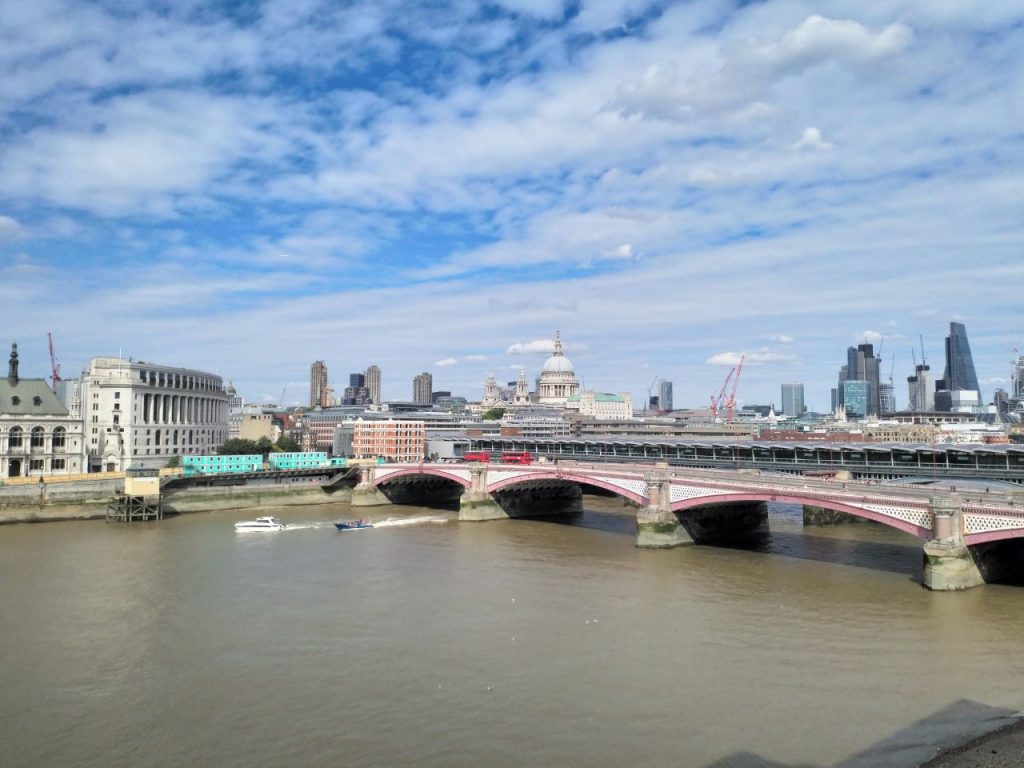
As we mentioned, media creation is one of the key features here and for this HMD has tied up with Facebook and Youtube to enable live streaming directly from the camera app. You can also interact with your Facebook Live comments straight from the camera app. To this effect, a badly named “Bothie” or dual sight streaming mode has been developed by the company that lets you stream or record from both the rear and front cameras simultaneously. The resulting video has both the clips fused together half n half. This could prove to be interesting for creators who would like to do a reactions style video while also capturing the setting. At the moment, there is no way to switch camera modes while recording.
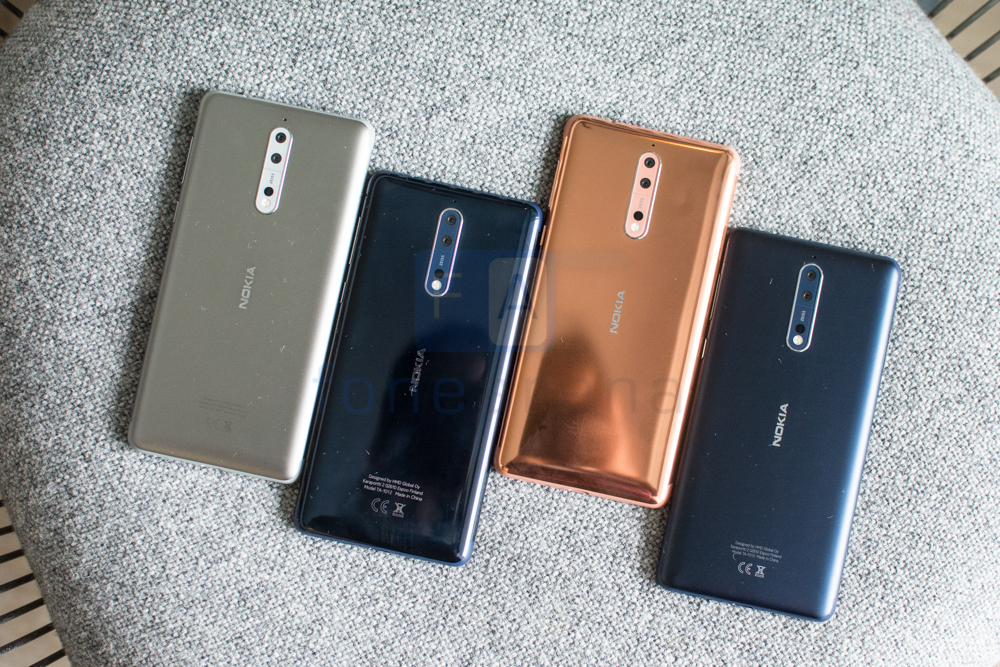
In it’s own right, the phone focuses on and based on our initial impressions, delivers on the essentials. We like the minimalistic design that fits really well in the hand and the variety of color options certainly make the phone stand out. Will the company’s bet on millennial media creators pay off remains to be seen but as a flagship device, the company has certainly managed to create a well-rounded and polished hardware that can be a great option for someone looking for flagship hardware without Samsung’s bloat. The Nokia 8 by HMD Global is priced at 599 Euros and starts shipping in early September globally. India availability is expected around early October.
